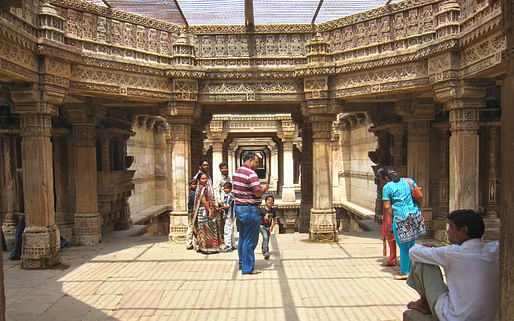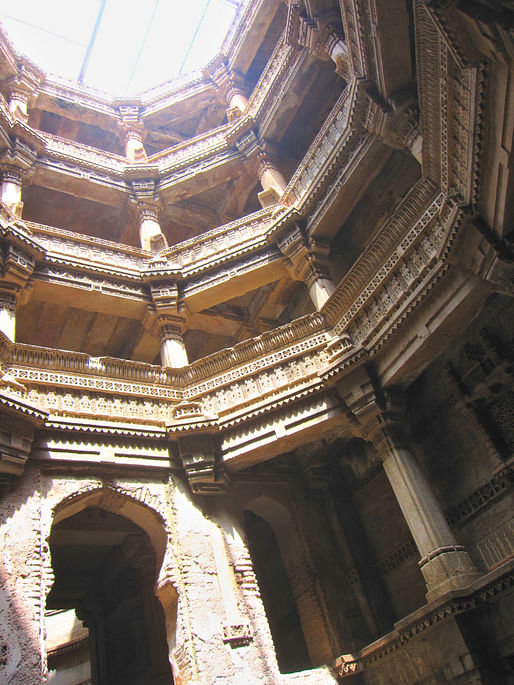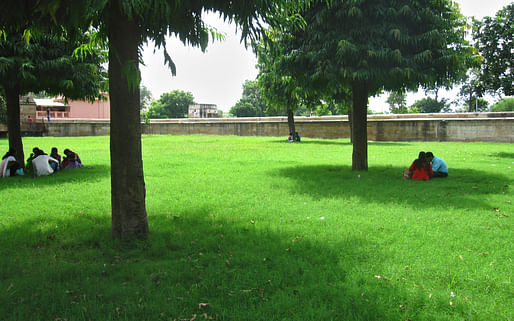
Jul '12 - Jan '13
Although Stepwells in Western India are somewhat trite, few exist in reputable condition. A visit to three of India's best may quench the thirst, so to speak, of said particular desire. Quite simply, to ensure year round water supply in the aired West, wells were dug, and stairs placed for ease of access. And when the women (who are the pack mules of hydration) wished to thank a particular deity for the quenching beverage, they ordered up a proper effigy for them. It seems however, that wall space became a scarcity before they ran out of deities.
She is an ingenious typology, though, and the only ancient monument in India, to which I am aware, that stemmed from practical necessities, rather than religious or governmental sanctimony. And in further incongruence, she also functioned as a social and recreational space, inviting children for afternoon swims as women washed clothes.
One need not mention specifics pertaining to the ceremonial progression of any particular stepwell, as all are tantamount. A body simply enters from ground level, usually through a gateway of sorts, and is subsequently struck with the intricacy of stonework. Perhaps it is the skill of a painter, keen on perspective and deception, or a metalworker who has ensconced his work in stucco, but lo! This is sandstone, carved like lace, and standing yet after 500 years! The afternoon glare elicits the lace from its shadow, and as one descends the statues grow darker as the sun retreats. The alteration in temperature is palpable, along with the smell of mold and guano, which one winces at first whiff. But the imagery is eerie and romantic, as diffused light cast shades of black on faces of countless deities. A certain stillness may be observed here, less the pigeons return from tour and spite ones tranquil meditation.
I cast a rupee into the black water of the well and made a wish, then preceded to dole out my bounty to a six-year-old girl and her four-year-old brother. I elicited the motion and they followed, though the little one called mulligan.
And for two of the three stepwells, the surrounding site was green and lush, like an American city park, irrigated as to allow such. Trees of moderate to small scales stand strewn about, their shady trunks a welcoming retreat for lovers and groups alike. But there is no grandiose monument to admire from afar, to gaze upon while sampling ones chai, or to pose valiantly as the buttress and savior of one leaning tower. This is no piazza Santa Croce. The highest point of the well wall stands but a few feet aloft the ground, and is as mundane and unintelligible as a garden ledge. It is the anti-monument.
 Women descending Adalaj Vav
Women descending Adalaj Vav
 The common landing of the three entrance stairs of Adalaj Vav
The common landing of the three entrance stairs of Adalaj Vav
 Intricate stonework
Intricate stonework
 The well, itself, lies dormant in a grand atrium
The well, itself, lies dormant in a grand atrium
 Rani ni Vav, the largest Stepwell in India
Rani ni Vav, the largest Stepwell in India
 This colonnade in Dada Harir Vav is unwalkable, less one prefers a 4 story fall
This colonnade in Dada Harir Vav is unwalkable, less one prefers a 4 story fall
 Dada Harir Vav, as she lies in her semi-urban context
Dada Harir Vav, as she lies in her semi-urban context
 The lush retreat encompassing Adalaj Vav
The lush retreat encompassing Adalaj Vav
An Indo Inquisition is a thirteen-week train expedition across India. The journey will document the influences of international modernism and British occupation, as well as compare the effects of wealth accumulation, culture, religion, and poverty with economic growth and their effect on the built environment.
1 Comment
Very well written!
Block this user
Are you sure you want to block this user and hide all related comments throughout the site?
Archinect
This is your first comment on Archinect. Your comment will be visible once approved.